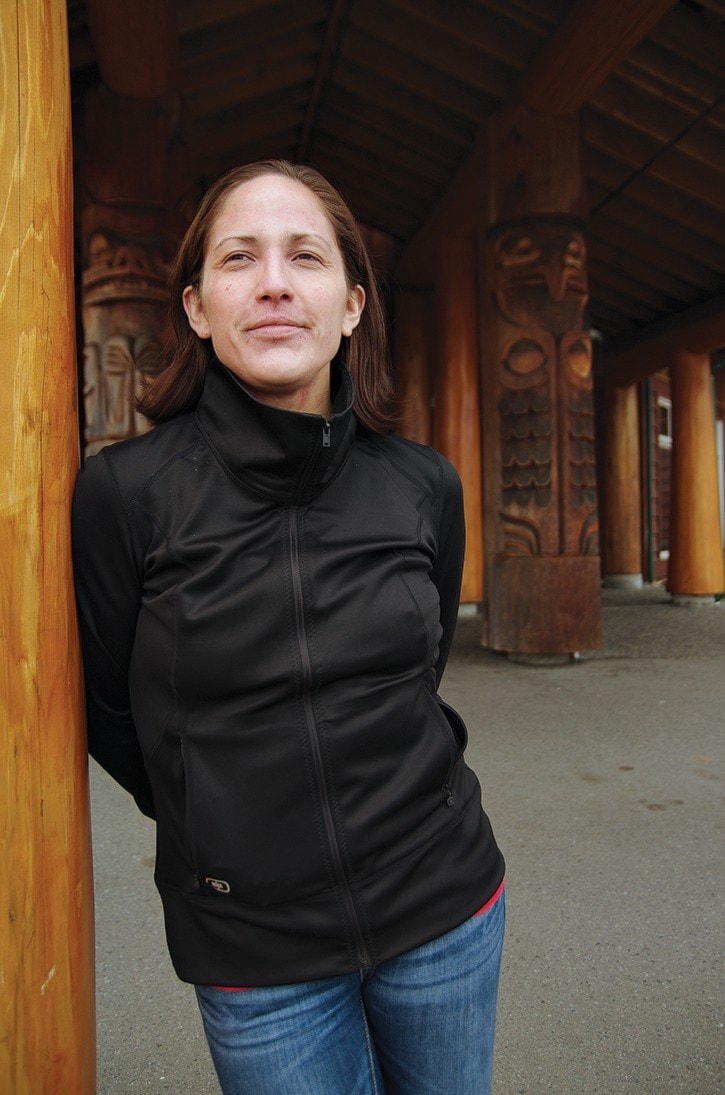The forestry industry is anticipated to kindle economic activity and wealth in the “multiple millions of dollars a year” for Snuneymuxw First Nation.
The first cut was made into 877 hectares of Snuneymuxw-owned forest on Mount Benson last year, representing an important economic driver, new revenue and future employment for more than 1,700 members of the Nanaimo First Nation.
The forest lands are part of a reconciliation agreement with the B.C. government, meant to spur economic activity for a nation that’s struggled with economic development, largely because of a lack of land, according to Douglas White III, band councillor and chief negotiator for the Snuneymuxw.
He now sees a community on the cusp of change, of being able to create employment opportunities and generate wealth for benefits and services and quality-of-life improvements for the Snuneymuxw people. With forestry lands and hoped-for achievements with land negotiations in the coming years, the nation has been brought from a place of poverty to one where it has “real financial and economic assets and economic activity for the first time.”
The provincial transfer alone more than quadrupled the nation’s land base and managing it all is a revamped and arms-length Snuneymuxw Economic Development Group of Companies, which is spurring economy activity by managing land holdings and forestry on behalf of the nation and outside the governance of Indigenous and Northern Affairs Canada.
It’s currently seeking proposals for a second cut of the forest lands and the sale of logs, as it takes inventory of its skilled workforce with plans to train members and establish its own forestry company next season.
The community is also being asked to help brand the economic group and weigh in on priorities for community development.
“It’s an incredible moment that we’re in,” said White. “We’ve largely been impoverished by the loss of access to our resources and to our village sites over the last 100 years or longer, so we’ve grappled with poverty and being in a state of dependency for far too long.
“We’re looking for opportunities to build our own wealth so we can set priorities and that we can start to look after ourselves, and to create that kind of independence is what any community and any political community would wish for itself.”
White has seen the Snuneymuxw First Nation struggle with economic development, including its push into the shellfish industry which was unsuccessful. A key limitation has been the lack of land, he said.
As of February this year, the population is 1,769, with 586 people living on reserve lands that span 266 hectares, according to Indigenous and Northern Affairs Canada.
But claims and negotiations have been expanding the Snuneymuxw land base, with one of the main goals being economic development.
Further negotiations with the province are expected this year for lands like the Linley Valley and Crown land in Departure Bay, according to White, who said the nation is also just concluding negotiations with the federal government for the loss of a 32-hectare reserve along Stewart Avenue that will bring a “significant” cash settlement. A portion of the dollars will support economic activity, he said.
The nation will also seek property that’s been in holding patterns, including more than 400 hectares on Gabriola Island. White said the “time is now” for the lands to go into the hands of the Snuneymuxw so it can develop them in a way that benefits the nation and the broader communities.
Already the Snuneymuxw Economic Development Group of Companies, tasked with managing land holdings, is attracting the attention of developers, realtors and investors with the land it has, including the south industrial waterfront and Duke Point. The work of the company is just beginning, says Erralyn Thomas, a band councillor and new president of the economic group.
The economic group was previously solely focused on the Sandstone development in south Nanaimo, but in 2014 it was given a new structure and the first board meeting was held last October when Thomas was named president.
Under this group, chief and council are the shareholders, but the corporation is separate from the nation and outside the direction of the federal government. There are so many things the company can do whereas previously “we were within this box, this Indian act box and you only get this amount of funding and you can only do this with it,” Thomas said.
She sees herself carrying on a vision built up by previous councils and chiefs, with an economic group that will allow for wealth generation, community development and an increased land base – all without compromising cultural values and way of life. She sees no reason why the economic group can’t become a ‘Bill Gates’ success.
Forestry has been a big deal for the community, and there has been a transition from dealing with pennies to millions overnight, she said, adding it allows for things to be done that couldn’t have under the current band budget.
Thomas is excited about engaging the community and optimistic others like the City of Nanaimo and Nanaimo Economic Development Corporation are receptive to working with the Snuneymuxw. She is also clear, that gone are the days Snuneymuxw is left in the dust and development won’t happen without them at the table.
“Boom, Snuneymuxw is here, guys.”
news@nanaimobulletin.com
